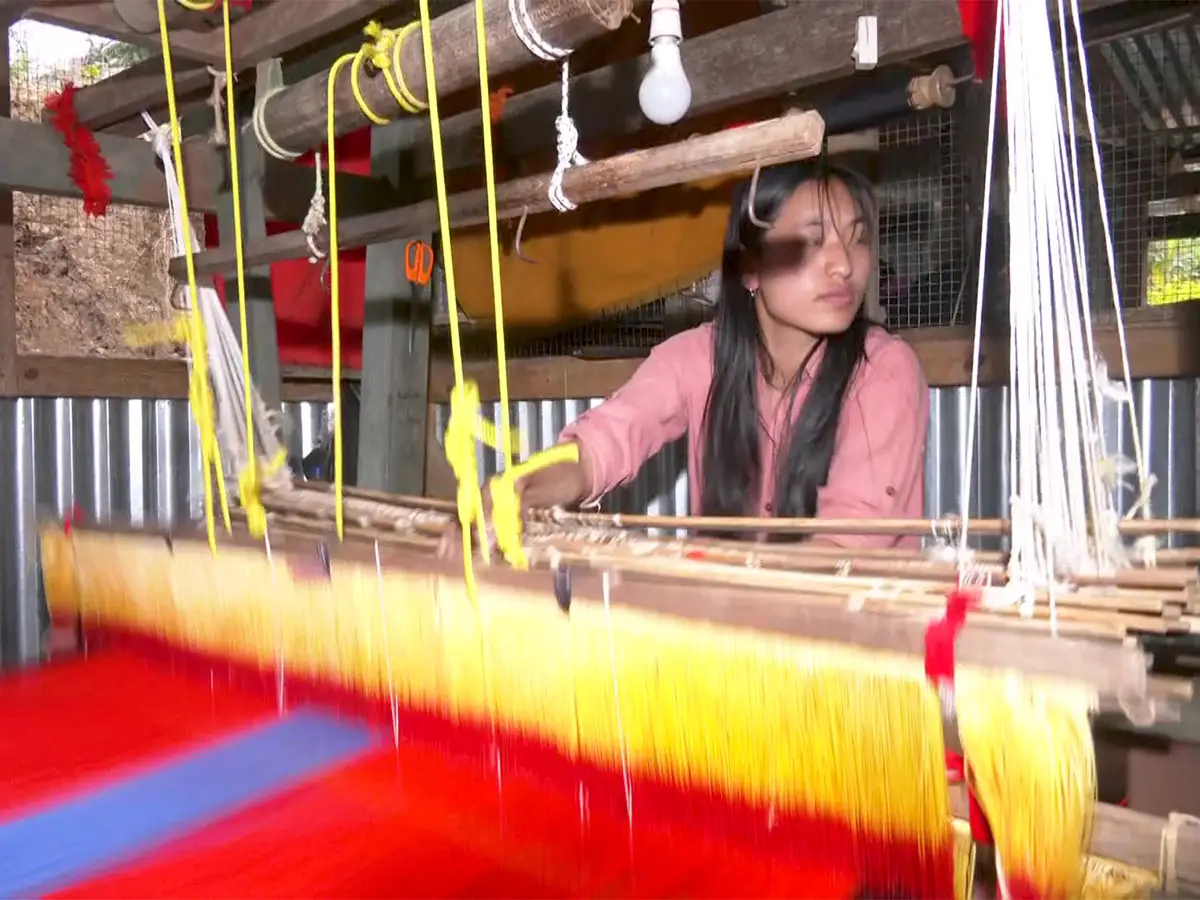
Weaving The Spirit Of A People: Naga Handloom Thriving In Manipur’s Hills
India-West News Desk
IMPHAL – In the misty hill districts of Manipur, far from the clamour of cities, looms hum quietly in village courtyards. Here, in places like Tamenglong and Ukhrul, the Nagas—Manipur’s third-largest ethnic group—are keeping centuries-old traditions alive, thread by thread.
In Tamenglong, home to the Zeliangrong Naga tribe, handloom weaving is more than a craft; it is a lifeline of cultural continuity. Women sit at backstrap looms, transforming silk and cotton into vivid stories of heritage and identity. Each garment, from the iconic phanek (wraparound skirt) to ceremonial shawls, bears motifs passed down through generations—symbols of status, ritual, and memory.
“We work here making traditional clothes. It takes one to two days to weave a piece of fabric, which requires a lot of effort,” says handicraft artist Thinglung Lio. “We make clothes for both women and men. Prices start around three thousand rupees and increase depending on the complexity of the work.”
In her modest weaving unit, hand-spun threads in deep reds, earthy blacks, and bold whites—colours often associated with tribal storytelling—are twisted into patterns that reflect the spirit of the land and its people. These are not just garments, but statements of identity, worn proudly at festivals, weddings, and rites of passage.
Yet, like much of Manipur’s traditional economy, the handloom sector has not been immune to the challenges of conflict and economic instability. In recent years, political unrest slowed production and fractured supply chains. “For about one and a half years, business was slow,” recalls Thotreichan Zimik, who runs a handloom cluster in Ukhrul. “But over the last five to six months, demand has picked up. Our workers are now busy from morning till evening.”
This cautious revival signals more than a return to business—it marks a renewed investment in cultural resilience. The state government and NGOs have supported artisan clusters through training programs, and online platforms have begun showcasing Manipuri textiles to broader markets across India.
Though exports are still modest, e-commerce is opening new doors. Younger designers are blending traditional motifs with contemporary cuts, appealing to both urban buyers and diasporic communities seeking a connection to their roots. This fusion of heritage and innovation is helping the handloom sector attract fresh attention—without compromising its soul.
As Manipur weaves its way through modernity and memory, its textile traditions stand not just as artifacts of the past, but as evolving expressions of identity and artistry. In the steady hands of artisans like Thinglung Lio and Thotreichan Zimik, each woven thread becomes a quiet act of preservation—and a loud affirmation of who they are.



